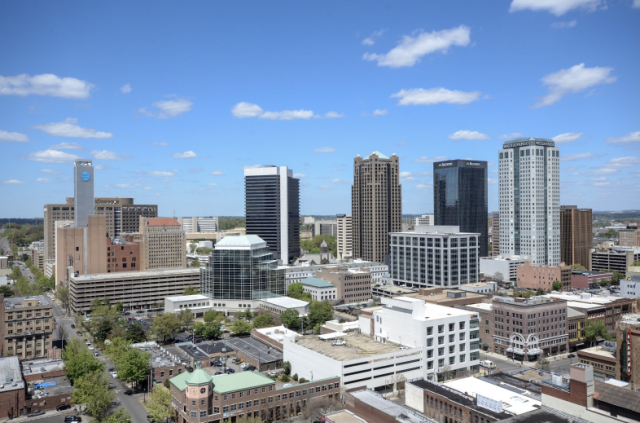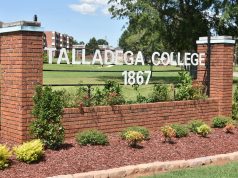
By Mayor Randall Woodfin
More than 60 years after federal courts dismantled legal segregation in Alabama, the city of Birmingham is still paying a price and suffering residual effects from this shameful part of our past.

This fact should not come as a surprise. We know communities to this day still feel the effects of our nation’s legacy of slavery and oppression. Even though Birmingham did not become a city until 1871, its founders were former slaveholders who perpetuated the inequities of the pre-Civil War South, and our city still bears the scars of unjust Jim Crow practices and laws.
Putting a true dollar value on the costs of segregation would require extensive research and scholarly examination. But there’s no question that Birmingham’s historical efforts to institute, maintain and enforce second-class citizenship for its Black residents has exacted — and is still exacting — a staggering price.
The full impact hit me hard during the challenges of COVID.
At the onset of the pandemic, our administration had already spent three years pressing for equity and social justice in all areas of health, education, economic opportunity, public safety and neighborhood vitality.
We had seen substantial impacts and exciting results. But COVID laid bare the fact that our modern-day efforts have still not solved the residual effects of our history.
Early on, the COVID death rate for the Black community was double the rate for whites. This was not only a reflection of existing health disparities but also existing economic disparities, in the kinds of jobs people held and the level of risk they faced. Black-owned businesses were also hurt more by the pandemic. Nationally, average earnings at Black-owned businesses fell 11 percent, compared to 2 percent for white-owned businesses.
In addition, as COVID took a toll on our city budget, and we were forced to examine every expenditure, we couldn’t escape the impact of the trajectory which had carried our city from legal segregation yesterday to self-segregation today — i.e., the white flight that drained people, resources and wealth from our communities and negatively impacted our ability to meet the needs of our neighborhoods.
Population Loss
In 1960, our population was at its peak, and we were just about to come under a global microscope because of large-scale Civil Rights demonstrations and City Hall’s violent reaction to those who dared protest our unfair and unjust society.
We have gone from more than 340,000 residents in 1960 to a little less than 201,000 residents in the 2020 census. The decline largely represents a loss of white population. Birmingham had 159,627 fewer white residents in 2020 than it had in 1960. Today, a city that had been 60 percent white and 40 percent Black in 1960 is about 75 percent Black and brown and less than 25 percent white.
Various factors contributed to Birmingham’s population loss and demographic shifts since 1960. But it is unquestionable that the single largest factor is “white flight” that began with the rise of organized Civil Rights activity in the mid-1950s, accelerated with the climactic Civil Rights demonstrations and the bombing of the Sixteenth Street Baptist Church in 1963, continued through federally mandated integration of public schools in the late 1960s and early 1970s, and accelerated again following the election of Richard Arrington Jr. as Birmingham’s first Black mayor in 1979.
Over the past 60 years, you can make a good case that segregation and its fallout have cost the City of Birmingham more than 40 percent of its peak population, accounted for mostly by the loss of almost 78 percent of its peak white population.
That has come with costs that Birmingham continues to pay, every day and in a hundred ways.
Disintegration
From a municipal government perspective, it has meant shrinking tax revenues and a progressive reduction in funds available to pay for city personnel and services, maintain and improve infrastructure and public facilities, and fund city programs, initiatives and partnerships. We have lost funds that otherwise might have been invested in the growth, progress and the social and economic well-being of Birmingham.
In addition, the physical size of the city did not shrink with our population. In fact, Birmingham covers a larger physical area today than in 1960, thanks to several annexations of property over the years. And though we provide services to fewer people today, we still must provide at least minimal services to all of the land within our boundaries, much of which has long been unoccupied and underutilized.
Some of that land is owned by the city, and on some of the city’s land are long-unused structures, ranging from former school buildings to community spaces to storage sheds. Some of those structures are vestiges of when the city school system ran one system for whites and a separate and unequal one for Black students; when the system “integrated,” many of the locations and facilities that had served the Black community were effectively abandoned, delivering a blow to surrounding neighborhoods and creating a drain on city resources.
In many cases, the equal and opposite reaction to segregation in Birmingham was not integration, but disintegration. This played out in a loss of support and investment in our neighborhoods, our school system, our infrastructure and our city as a whole.
While we may not have a full accounting of how much segregation still costs Birmingham, I can say with conviction that the cost is too high for the residents and taxpayers of Birmingham.
Tough Conversations
This is why I’m initiating tough conversations with our City Council, the boards that oversee facilities such as libraries and parks, and other community investors. While we’re still in the process of considering how we can move forward most prudently as a city, it’s critical that we acknowledge the past and the price we are still paying for it.
My goal is to set the right tone for these overdue conversations. While we should not jump to close facilities for the sake of closing facilities, we must take action — even hard actions — if it is in the best interest of our city.
I recently hit the subject head-on during an interview with journalist Guy Rawlings on WVTM13.
As I told him, any discussion about merging facilities tends to invite pushback, because it’s human nature that people don’t want anything to close. At the same time, when you have two facilities that are responsible for providing the same service to one community and neither of them offers optimal service, both are in shambles, and each is woefully underutilized by the residents, we would be better served to have one upgraded facility that provides the community with what it needs.
This is the start of the conversation, but there is much more talking to do. It’s particularly timely as we deploy federal COVID recovery funds to restore dignity in our neighborhoods and prioritize investments in public infrastructure.
Our guiding principle should be a collective commitment to diversity, economic equity and social justice, and our goal should be to correct inequities as an integral part of a dynamic future that uses our collective resources wisely and offers all our residents an opportunity to thrive.
By doing this, our city can begin to recover the costs of segregation, redeem the debt paid so many throughout our history and build a community that is stronger, more equitable and more just for all.
Randall Woodfin is the 30th Mayor, City of Birmingham, Alabama. This opinion piece appeared originally on medium.com




